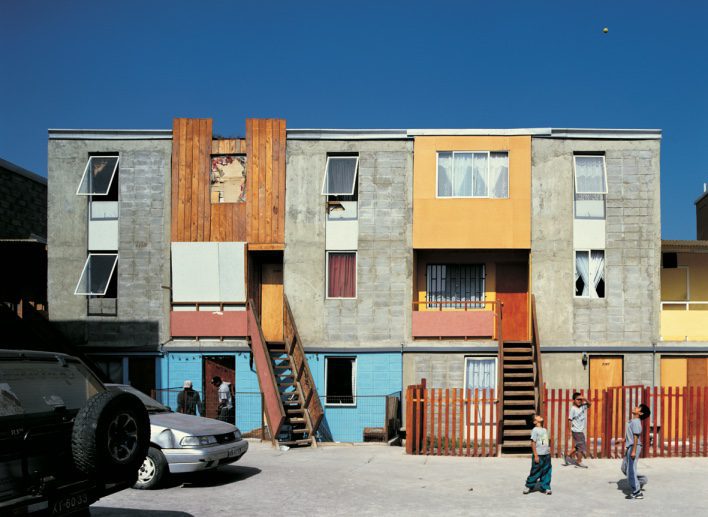
Social Radicalism in Architecture: Insights from Christopher Alexander

Social radicalism in architecture seeks to challenge established power structures, social hierarchies, and conventional aesthetics, aiming to create a more inclusive and human centered built environment. Christopher Alexander, a prominent architect and design theorist, has played a significant role in shaping this discourse by emphasizing how architecture can empower communities and promote social well being. His approach contrasts with modernism, which prioritizes technology, efficiency, and form, instead highlighting the importance of human experience, flexibility, and a more democratic design process. This research delves into the fundamental aspects of social radicalism in architecture, focusing on Alexander’s theories and contributions.
Understanding Social Radicalism in Architecture
Social radicalism in architecture is deeply intertwined with political and social movements that seek to empower marginalized groups, democratize the design process, and question the top-down approaches that have long dominated urban planning and architectural practice. The goal of socially radical architecture is not merely aesthetic; it is political, aiming to dismantle the barriers between the architect, the user, and the community. In this context, architecture becomes a tool for social change, giving people agency over their spaces and promoting equity. Christopher Alexander’s contributions to social radicalism in architecture revolve around his critique of the modernist paradigm and his advocacy for a participatory design approach. His theories argue for a fundamental shift in how architecture is conceived and practiced, placing emphasis on the collective wisdom of communities and the need for environments that evolve organically.

Christopher Alexander's Theories and Ideas
Pattern Language and the Evolution of Participatory Architecture
Christopher Alexander’s seminal work, A Pattern Language (1977), crafted with collaborators Sara Ishikawa and Murray Silverstein, represents a transformative shift within architectural methodologies, presenting a compendium of 253 patterns. These patterns span various scales of human experience, offering design solutions that move fluidly from broad regional planning concerns to the intimate details of individual buildings and interiors. Alexander’s approach here is rooted not merely in an architectural lexicon but in a comprehensive reimagining of how spaces can be crafted to enhance human experience. Each pattern is less a fixed prescription than a suggestion for ways in which people might harmonize their environments with natural and social dynamics, thus elevating architectural thinking beyond structural or functional constraints.
The Nature of Order and the Search for Living Structure
Further expanding on his philosophical inquiries into architecture, Alexander published The Nature of Order, a four-volume treatise (2003-2004) that probes deeper into the metaphysical aspects of design. Here, he challenges the reductionist, efficiency-driven ethos of modernist architecture by positing a paradigm in which beauty, harmony, and life-enhancing properties constitute the true measures of a building’s success. Alexander’s notion of “living structure” emphasizes that architecture must emerge organically, responding to the inherent rhythms of human life and the environment. He contrasts this view with the formalism often found in modernist approaches, where aesthetic or functional concerns frequently overshadow the subtler qualities of ambiance and emotional resonance. His work thus aligns with a broader intellectual tradition that includes thinkers like Martin Heidegger, who in Building Dwelling Thinking (1951) also questions the role of being and place-making within architectural spaces.
Participatory and Bottom-up Design as a Democratic Tool
Integral to Alexander’s theoretical framework is the concept of participatory or “bottom-up” design. In direct opposition to the centralized, hierarchical approaches that dominate modernist and postmodernist architectural practices, Alexander champions a model in which users are active agents in shaping their environments. His pattern language serves as an accessible tool to democratize design, empowering individuals without specialized knowledge to contribute meaningfully to the creation of their own spaces. This approach recalls the democratic ideals advanced by urbanists like Jane Jacobs, who, in The Death and Life of Great American Cities (1961), criticized the top-down urban planning strategies that disregarded the lived experiences and needs of city inhabitants.

Source: Website Link
Critique of Modernism
At the heart of Christopher Alexander’s architectural philosophy lies a critical examination of modernism, particularly its socially isolating tendencies. Modernist architecture, grounded in the use of industrial materials, standardized forms, and a conscious rejection of historical influences, often engenders environments that, rather than inviting human interaction, feel stark and unwelcoming. By prioritizing abstract ideals of efficiency, functionality, and progressive aesthetics, modernist architecture frequently sidelines the social and emotional dimensions that enrich human experience. This disconnect, Alexander argues, renders modernist spaces alienating to their inhabitants, stripping them of the organic, life-enhancing qualities that foster meaningful interactions and a sense of belonging.
Alexander’s work stands as a radical response to this prevailing trend, advocating for an architectural language that places human well-being at its core. His use of “patterns” in design serves as a way to reconnect architecture with the fundamental needs and instincts of people. These patterns, which draw on universal human experiences—intimacy, community, and a connection to nature—propose a model of design that is inherently empathetic and socially oriented. By embedding such elements into the architectural fabric, Alexander’s approach counters modernism’s detachment, instead fostering spaces that resonate on a deeply human level.
This reorientation toward human-centered design marks Alexander as not merely a critic of modernism but as a proponent of social radicalism within architecture. By advocating for environments that embrace human emotions and relationships, he offers a compelling alternative to the sterile, impersonal landscapes so often produced by modernist principles, championing a vision of architecture as a conduit for social connection and personal fulfillment.

Case Studies and Examples
Several of Christopher Alexander’s projects illustrate his theories of social radicalism in architecture. For instance, his involvement in the design of the Eishin School in Japan exemplifies his participatory approach. Rather than imposing a predetermined design, Alexander worked closely with teachers and students to develop a campus that reflected their needs and desires. This collaboration resulted in an environment that fosters community, learning, and interaction, all central to Alexander’s architectural philosophy.
His work on the Mexican Housing Project in Mexicali is a direct application of A Pattern Language. In this project, Alexander allowed residents to actively participate in designing and constructing their homes, leading to an organic, adaptive neighborhood that grew according to the needs and input of the community members.

Social Radicalism in Contemporary Architecture
While Christopher Alexander’s theories remain influential, the challenge of incorporating social radicalism into contemporary architecture persists. Architects such as Alejandro Aravena, with his work on participatory housing in Chile, or Lacaton & Vassal, who prioritize adapting existing buildings to preserve community ties, continue to explore and implement socially radical ideas in architecture. The ongoing discourse around sustainability, inclusivity, and community participation in architecture owes much to Alexander’s pioneering work.

Conclusion
Christopher Alexander’s contributions to social radicalism in architecture have provided a powerful counter-narrative to the dominant paradigms of the 20th century. His emphasis on participatory design, organic growth, and the creation of environments that respond to human needs represents a radical shift in how architecture is understood and practiced. As the world faces increasing social, environmental, and economic challenges, Alexander’s ideas continue to offer valuable insights for architects and planners seeking to create spaces that are not only functional but deeply humane.
References
- Alexander, C., Ishikawa, S., Silverstein, M. (1977). A Pattern Language: Towns, Buildings, Construction. Oxford University Press.
- Alexander, C. (2003-2004). The Nature of Order (Vols. 1-4). The Center for Environmental Structure.
- Jacobs, J. (1961). The Death and Life of Great American Cities. Random House.
- Aravena, A. (2016). Elemental: Incremental Housing and Participatory Design.

Mostafa dagher
About the author
Mostafa is a dedicated architecture student with a deep passion for research and discovery. Fascinated by the intricate designs and histories of buildings, he is always eager to explore new architectural styles and innovations. His curiosity drives him to delve into the details of both modern and historical structures, constantly seeking to expand his knowledge.
Related articles


How Globalization Shapes Your Cultural Identity

Top 10 Lake Revitalization Case Studies

Postmodernism and Urban Development
5-Days UDL GIS
Masterclass
GIS Made Easy – Learn to Map, Analyse, and Transform Urban Futures
Session Dates
14th-18th July 2025

Free E-Book
From thesis to Portfolio
A Guide to Convert Academic Work into a Professional Portfolio”
Recent Posts
- Article Posted:
- Article Posted:
- Article Posted:
- Article Posted:
- Article Posted:
- Article Posted:
- Article Posted:
- Article Posted:
- Article Posted:
- Article Posted:
- Article Posted:
- Article Posted:
- Article Posted:
- Article Posted:
Sign up for our Newsletter
“Let’s explore the new avenues of Urban environment together “














































